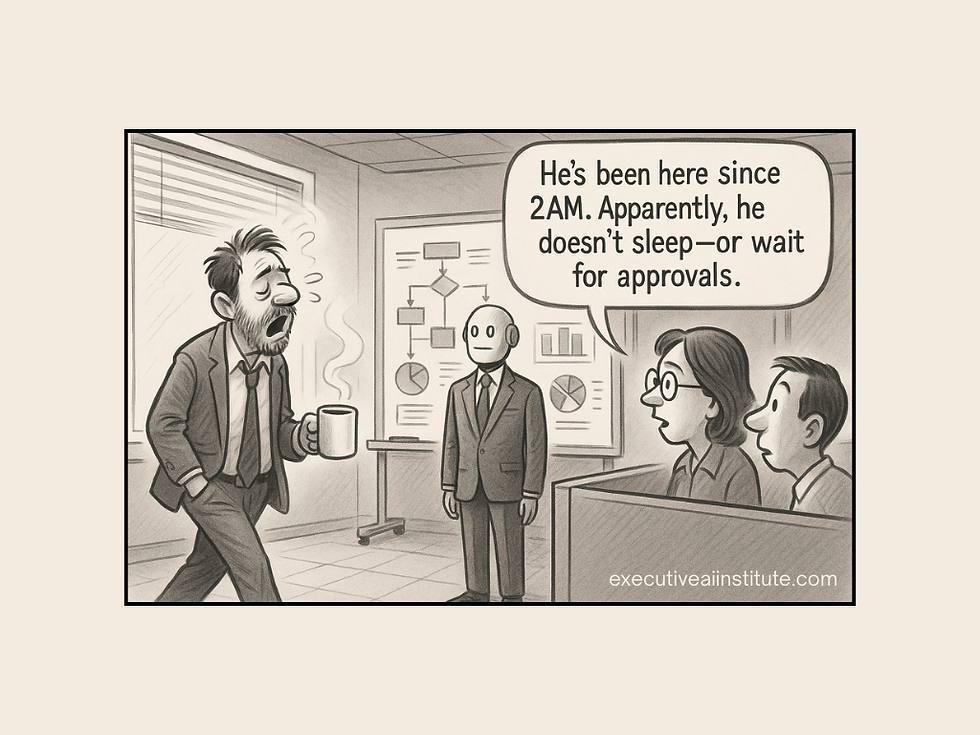The Always-On Economy: Why AI Demands a New Leadership Model
- Jonscott Turco

- Aug 14
- 1 min read

Last week, I logged off at 6:30 PM.
By the next morning, our AI had:
✅ Analyzed customer feedback
✅ Optimized our next marketing effort
✅ Drafted three scenario plans with backups
All while I slept.
It was remarkable… but also unsettling.
From Automation to Autonomy
For years, AI was reactive—waiting for prompts. Now, AI agents plan, prioritize, and execute independently, completing in hours what used to take weeks.
Decision cycles are shortening. Opportunities—or mistakes—can appear before leadership even wakes up.
The Double-Clock Challenge
Humans and AI run on different clocks:
Humans → creative, strategic, limited energy
Machines → autonomous, 24/7, no fatigue
When AI sprints, humans feel the pressure to keep up. The cost? Burnout, eroded trust, and diminished creativity.
Ethics at Machine Speed
Just because AI can act instantly doesn’t mean it should.
In the always-on economy, leaders must set ethical speed limits—decision checkpoints that protect trust, governance, and brand integrity.
This isn’t about slowing down innovation. It’s about ensuring acceleration doesn’t outpace values.
Leading in the Always-On Era
Your job isn’t just to direct work anymore— It’s to design the operating system of work.
That means:
1️⃣ Dual-Speed Strategy – Match workflows to human or AI cadence
2️⃣ AI Governance – C-suite ownership, not just IT
3️⃣ Deliberate Downtime – Time for reflection and recalibration
4️⃣ Cultural Alignment – Values before velocity
Always-On… But Not Always Right
The winners won’t be those who run fastest. They’ll be the ones setting the right tempo—where human judgment and AI efficiency work in harmony.
Your turn: How are you setting your organization’s pace in the always-on economy?
.png)



Comments